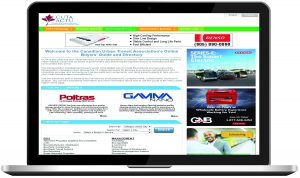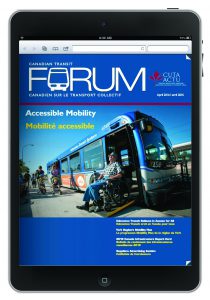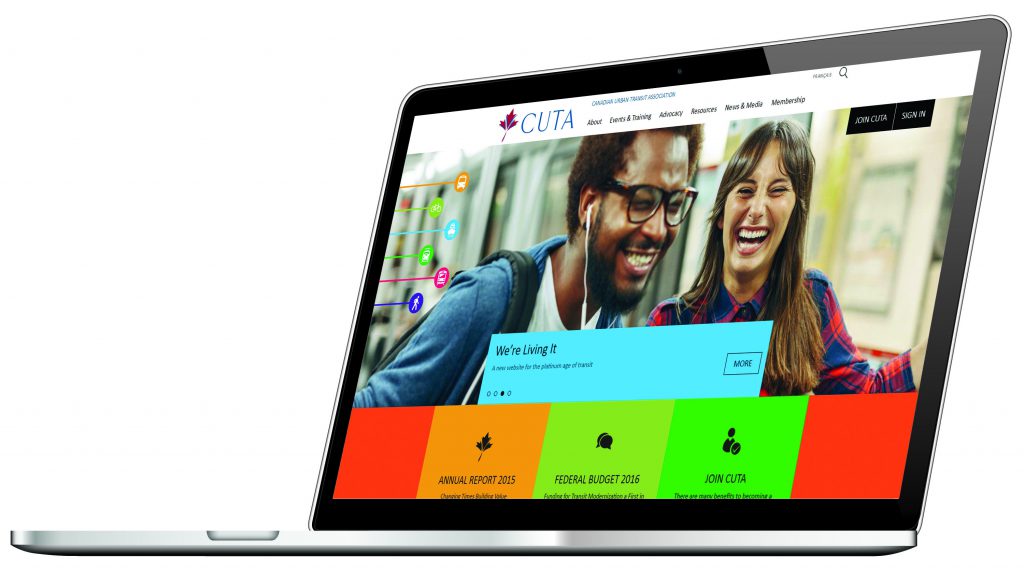A Healthy Obsession with Value Creation

Since taking over the helm of the 112 year-old Canadian Urban Transit Association last June, CUTA’s President & CEO, Patrick Leclerc, has overseen a successful website overhaul, created a new position, VP of Member Value, introduced a robust online idea board that the whole organization contributes to and intensified the focus on member ROI.
![]()
Build personal “focus time” and work-life balance into every day, no matter how hectic. ![]()
Advocacy is very similar to sales except that you’re selling policies and changes rather than a product. ![]()
People don’t rely on just one mode of transport to get places. They need a seamless, integrated journey via all their transportation modes. ![]()
New ideas can come from anywhere in your organization. Encourage everyone to share and be heard. ![]()
Association Adviser: Patrick, tell us a little about CUTA.
Patrick Leclerc: We’ve been in existence in various forms since 1904. CUTA is the national association representing public transit systems, suppliers to the industry, government agencies, individuals and related organizations in Canada and abroad. We have about 500 member organizations representing more than 60,000 employees. We also have many members located in the U.S. because the market we serve is very well integrated.
AA: Is CUTA membership growing?
PL: Yes, it has grown and diversified over the last 10 years. Technology is playing a big role in public transit with intelligent transportation systems and more sophisticated security systems. We also have new providers entering the market and joining us—anyone who impacts the efficient movement of people through an urban area.
AA: We understand CUTA has been very active on the advocacy front lately. What’s driving that?
PL: Now that federal funding is finally in place for public transit in Canada, we need to ensure that we have the right policies in place to invest that money wisely. Our industry is going through a transformation. One of the biggest changes is the rise of integrated urban mobility. You may have seen all the debates taking place across the country about how to deal with Uber.
Our industry is doing a lot of thinking about how to integrate all the new mobility providers. We need to change the perception about urban transit and mobility and make sure we’re developing the right offerings to serve the needs of people in the community.
AA: Does Uber now belong to CUTA?
PL: Uber is not a member yet. But they participated in our recent conference panel in Montreal. You need to look at everyone who is having an influence in your sector and you need to talk to them. We also invited real estate developers and investors [to the conference]. We had the banking industry. They’re getting more involved in financing urban transit. We engage with these important players even if they’re not CUTA members.

AA: What are some of the biggest misconceptions people have about public transit?
PL: It’s not just about busses and trains. People don’t move with just one mode of transportation. Trips often involve walking or cycling, then getting on transit. It could be driving kids to day care, then switching over to the park-and-ride to get to work. Our mandate is to ensure people have a seamless and integrated journey throughout all these [transportation] modes. ![]() That’s what makes it so exciting. Urban mobility is transforming big time with the new players in the industry such as Uber, Bridge and Lyft among others. It’s a fun time to be in the industry.
That’s what makes it so exciting. Urban mobility is transforming big time with the new players in the industry such as Uber, Bridge and Lyft among others. It’s a fun time to be in the industry.
AA: So, what’s next for urban transit?
PL: As I mentioned, the Canadian (federal) government recently announced unprecedented investment in public transit. That’s huge for us. There’s no comparable federal investment in public transit in the U.S. although we’re still lagging many of the transit systems in Europe. But, with the aging of the population, it’s obvious that people will need to rely more on these options and we need to be up to the challenge.
AA: Have how your earlier jobs in communications and government relations prepared you for your current role at CUTA?
PL: Always keep your issues non-partisan. Regardless of which party is in power in the government, you need to engage with them. You need to state your case and explain the value of whatever it is you’re trying to move forward. You need strong research and analysis to back up your business case. Doing advocacy is no different than selling a product except you’re selling policies and changes and you really need to understand who you’re talking to before you try to engage them.
AA: What have been some of the biggest surprises for you since taking over the helm of CUTA last June?
PL: It’s got to be the number of important, strategic decisions you have to make in a week, or even in a day. We live in a fast-paced world. Most of the time the information you get is only partial and risk assessment can be difficult. You need to surround yourself with the right people so you can make good decisions fast while keeping up with your busy schedule.
AA: What’s a typical workday (or week) like for you?

PL: Like many leaders, achieving work-life balance is a challenge. When it comes to the office, a typical workday is a day that’s well planned out and then by 8:30 in the morning, the planning goes away. You’re dealing with what’s happening at the moment. But, I try to structure in some “focus time” every day that’s dedicated only to my strategic work. ![]()
AA: What are the biggest challenges faced by CUTA members. How are you helping them?
PL: As we have for many years, we continue to help our members with long-range planning, traffic congestion, competition from the private automobile, vehicle design, transit marketing, government relations and federal regulation. More recently, the focus has been on obtaining sustainable funding to keep expanding and maintaining public transit.
We also help members deal with ever-rising customer expectations. And we’ve been big champions of public transit security—not just for riders, but for employees. For example, we were finally successful in implementing changes to the criminal code that made assaulting a bus driver an aggravating factor with much stricter penalties.
AA: How would you describe your leadership style?
PL: I believe in value based leadership. It’s about helping people, showing compassion, thanking people. It’s about making sure we have high values and are delivering against our commitments. The way to get the most out of each person who works or volunteers for you is different. Some people need more direction. Others just want to know what the end goal is and they’ll design their own way to get there.
As a leader, you need to understand what drives people go to each person individually. I really believe in an open door policy. As a leader, you’re there to set the direction and make sure your people have the tools they need to get the job done.
AA: We understand you created a new position at CUTA called Vice President of Member Value. Why?
PL: The entire non-profit sector is going through a soul searching exercise about the way we define value. Members are increasingly questioning the value of every organization they belong to and what they’re getting out of it. Before the Internet democratized access to knowledge, an association membership gave you access to valuable information that [outsiders] could not obtain. When you received your monthly or biweekly bulletin about what was happening in the industry, that was your only connection to the industry.
Now, if you try to hide all your research in a member-only, they’ll find other high quality research elsewhere that’s accessible to everyone and might be better than yours. How do you deal with that? What is the value you bring to members? Associations really have to define their value and many have been slow to adapt. As an association, you bring collective value to the members—being a strong voice for your industry—but members are also asking themselves, “What’s in it for me?”
AA: How do CUTA’s member communication vehicles factor into the value equation?

We use online, print and social media. But we need to do a better job of using these tools. We just launched a new website that’s more interactive and dynamic than the old one. It’s more mobile responsive. We have to do a much better job of using what we produce. We need to use the various communications channels that we have to unwrap what we have to offer.
For instance, we do an annual study that gathers 1,300 data points about each transit system across the country. It gives us a wealth of information to disseminate. But, you can’t have an 800-page publication on the website. How many people will read it cover to cover? You need to know what members really value and extract it from your research and use each channel smartly to disseminate your knowledge in a way that is easily digestible and useful for members.
AA: Which have been your most successful sources of non-dues revenue?
PL: Our conferences, training programs and data [licensing agreements] all generate revenue. We also have advertising in our publications. It’s really important for associations to diversify revenue streams. You can’t keep raising dues. As a not-for-profit, you want to create a surplus that can be reinvested in the business and in your people. Offering professional development is as critical as developing new products and services for your members.
AA: Speaking of new product development, how does CUTA bring new ideas to the table?
PL: It’s pretty open. When I first came here, I was getting so many new ideas from my teammates and trying to put them on a whiteboard in my office. It was getting too difficult, so we created an idea board on our Intranet that helps us collect all the ideas and put them out for consideration. There’s a section for new ideas. There’s a section for process improvement. We encourage all of our people to share their ideas, put them on the idea board, and let people comment on them.
Innovation can be found anywhere in your organization. ![]() It’s not necessarily the big breakthrough disruptive innovation—most of innovation is improvement on what you already have. The key is to make those ideas shine. Don’t throw them away or let them die on the board. The engagement from staff has been fantastic. Our people don’t come to work to punch in and punch out. They really care about what they do. When you allow that process to take place and give fair consideration to people’s ideas, you’ll be surprised at how much value you can bring to members and how you can improve the organization.
It’s not necessarily the big breakthrough disruptive innovation—most of innovation is improvement on what you already have. The key is to make those ideas shine. Don’t throw them away or let them die on the board. The engagement from staff has been fantastic. Our people don’t come to work to punch in and punch out. They really care about what they do. When you allow that process to take place and give fair consideration to people’s ideas, you’ll be surprised at how much value you can bring to members and how you can improve the organization.
AA: Things seem to be going well. Is anything keeping you up at night?
PL: Value, value, value! I remember when I had my first meeting with staff I said, “We need to become obsessed with value creation.” We created a new position, VP of Member Value. We need to look at everything we do through the value lens. It’s not just our product and services. At the end of the day, if a publication is not bringing value to a member then it’s not worth the paper it’s printed on. But if it brings knowledge, it’s not just a publication, it’s a tool. How do we define value and how do we define our programs to optimize value to members. That’s what I’m obsessed about.
AA: Any final thoughts for our readers?
PL: The biggest challenge for any senior leader is finding balance in life. Success in life should not be defined only by your career. I’m passionate about what I do and I love to spend time with members, but I have three young children (ages 8, 5 and 10 months) and I want to spend time with them and my wife. I want to spend time with friends. To be fulfilled and happy, you need to have balance in life. That’s what keeps me grounded.

